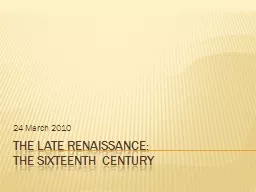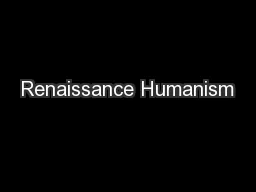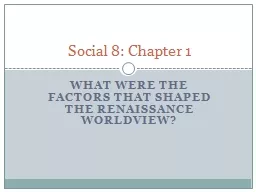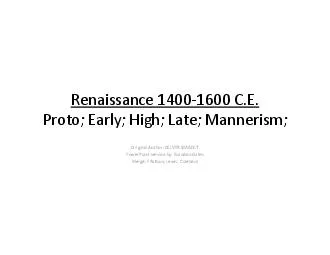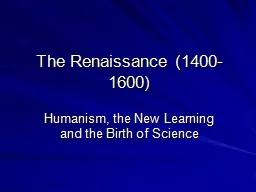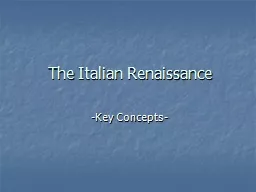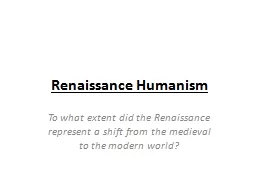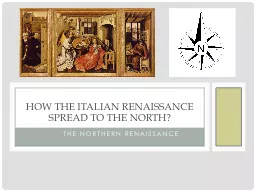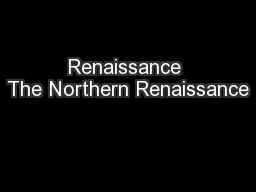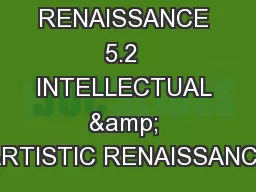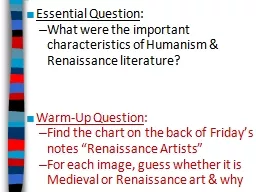PPT-The Late Renaissance:
Author : conchita-marotz | Published Date : 2019-11-20
The Late Renaissance The Sixteenth Century 24 March 2010 Outline Atmosphere of Anxiety Christian Humanism Erasmus Thomas More Reformation Martin Luther 95 theses
Presentation Embed Code
Download Presentation
Download Presentation The PPT/PDF document "The Late Renaissance:" is the property of its rightful owner. Permission is granted to download and print the materials on this website for personal, non-commercial use only, and to display it on your personal computer provided you do not modify the materials and that you retain all copyright notices contained in the materials. By downloading content from our website, you accept the terms of this agreement.
The Late Renaissance:: Transcript
Download Rules Of Document
"The Late Renaissance:"The content belongs to its owner. You may download and print it for personal use, without modification, and keep all copyright notices. By downloading, you agree to these terms.
Related Documents

